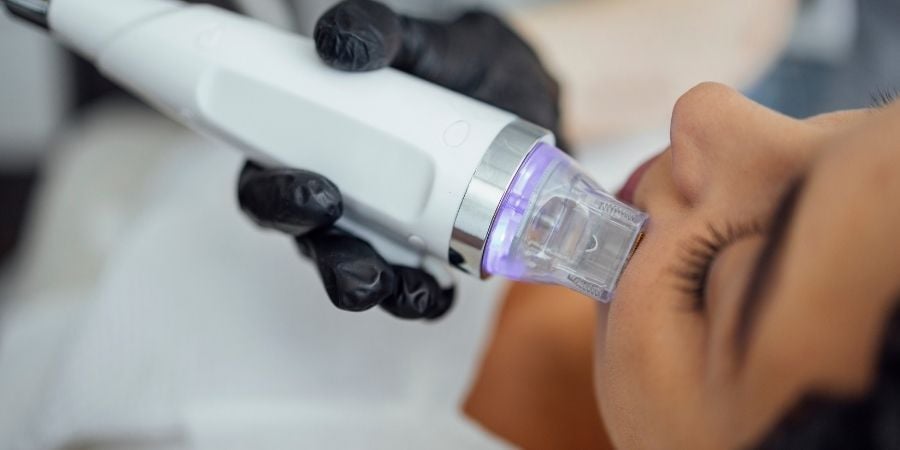If you’ve been researching effective non-surgical rejuvenating skin treatments, chances are you’ve come across HIFU and Microneedling. Both are big hitters in the world of advanced aesthetics, and they work in entirely different ways - no wonder it’s hard to know which one is right for you.
HIFU and Microneedling are far from interchangeable. Think of them as two very powerful tools in your skin care toolkit, each with its own strengths, applications and ideal use cases.
What Do They Do?
HIFU stands for High-Intensity Focused Ultrasound, and it works by sending focused ultrasound energy deep beneath the skin layers: past the dermis, right down to the SMAS layer, which is the same layer surgeons lift during a facelift (yes, really!). This thermal energy causes the tissues to contract and stimulates your body’s own wound-healing response, producing fresh new collagen over the following weeks and months.
Microneedling creates tiny injuries in the skin, which causes collagen and elastin production to increase, helping remodel the skin’s structure. It significantly improves skin quality and issues such as fine lines, texture, scarring, and firmness.
How Deep Do They Go?
HIFU is best known for targeting quite deep into the skin - think 1.5mm, 3.0mm and 4.5mm beneath the surface. That allows it to treat skin laxity at its foundation.
Microneedling usually works in the 0.25mm to 2.5mm range, staying within the dermis and upper hypodermis, making it better for skin surface concerns such as texture, and mid-depth tightening.
So if your concern is sagging jowls, a heavy neck, or lifting the brow area, HIFU’s deep penetration is a major plus. If you’re battling texture, acne scars, wrinkles or crepey skin, Microneedling may be the better procedure.
By now, most of us know if there’s one single thing we can do to keep our skin healthy, young, firm, clear and glowy - besides wearing your daily SPF - is collagen induction therapy such as HIFU and Microneedling.
Here’s A Bit of Science (That’s Actually Interesting)
HIFU heats tissue to around 60-70°C, but only at its focal point deep within the skin, and the surrounding tissue stays untouched. That’s how it can work at such depth without damaging the surface.
Microneedling, by contrast, doesn’t use heat at all. Instead, it creates thousands of controlled micro-injuries in the skin to trigger a wound-healing response. This process stimulates neocollagenesis (new collagen production) and neoelastogenesis (you guessed it: new elastin), leading to smoother, firmer skin over time.
Think of HIFU as the scaffolding that lifts from the base, while RF Microneedling is more like retiling the walls.
What’s It Best For?
HIFU is great if:
You’re seeing sagging in the lower face, jawline, or neck
You want a non-surgical “lift”
You have mild to moderate skin laxity
You want a once-a-year approach to tightening
Microneedling is ideal if:
You have textural issues like acne scars or enlarged pores
You’re bothered by crepey skin
You want to improve skin tone and surface quality
You’re okay with a treatment plan (rather than one-and-done)
Which one is better for you depends entirely on your skin, your goals, budget and your timeline. We might recommend HIFU if your main issue is loss of definition in the lower face. We might recommend Microneedling if you want a smoother texture. And in some cases? The best results come from combining both.
Can I Combine Them?
Absolutely. That’s when magic happens! We often recommend combining HIFU and Microneedling for clients who want both lift and refinement. It’s a powerful pairing: HIFU works on the deeper foundations, Microneedling polishes the surface.
How Many Sessions Do I Need?
HIFU is typically a once-a-year treatment, with results building gradually over 2–3 months and continuing to improve. Microneedling usually works best in a course of 3 to 4 sessions, with maintenance every 6 to 12 months, depending on your goals.
Ready to begin?
If you’re curious about which option is best for you, the best place to start is with a consultation. We’ll take a proper look at your skin and create a personalised plan that actually makes sense for you.
Book Now

%20(1).jpg)
-1.jpg)





